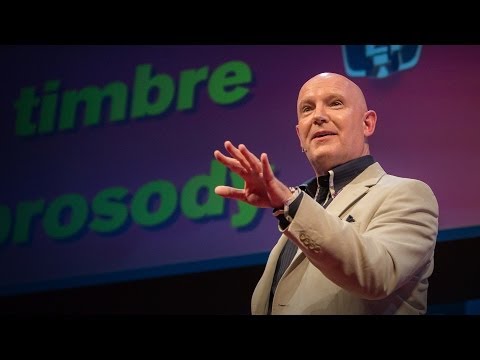Captivating an audience isn’t just about the words you choose; it’s about how you deliver your message. To truly understand how to speak effectively, you need to grasp that speaking is not only a skill but an art that influences your professional brand, career development, and personal relationships. It’s estimated that 75% of individuals suffer from glossophobia, the fear of speaking in public. But fear not! We’re diving into actionable strategies to transform your public speaking abilities and help you thrive. It’s time to take control of your speaking career!

Top 7 Techniques on How to Master Public Speaking
Effective communication goes beyond simply being heard; it’s about being understood and remembered. Here are seven essential techniques that will enhance your ability to speak effectively and captivate any audience.
1. Understand Your Audience: Tailoring Your Message
Understanding your audience’s expectations is essential. Take Sheryl Sandberg, former COO of Facebook, as an example. She masterfully tailors her presentations based on her audience, whether she’s speaking in a corporate boardroom or a college auditorium. Speak in their language. Are they looking for inspiration, information, or empowerment? Knowing your audience allows you to resonate more deeply with them, ultimately keeping their interest piqued.
2. Engage with Storytelling: The Power of Narrative
Humans are wired to respond to stories; they connect us and evoke emotion. Take a cue from Brené Brown, who intertwines personal anecdotes with her messages. Starting your speeches with a compelling story related to your key message establishes an emotional connection, allowing the audience to see themselves in your narrative.
3. Use Body Language Effectively: The Unspoken Component
Your non-verbal communication can sometimes speak louder than words. Barack Obama is a great example of a speaker who uses gestures and expressions to emphasize points. Maintain eye contact, utilize hand movements, and keep an open posture to engage your audience physically. This not only supports your verbal message but also fosters a stronger connection with your audience.
4. Practice, Practice, Practice: The Backbone of Confidence
Consistent practice is crucial. Look at Oprah Winfrey, who rehearses extensively before major appearances. Record yourself while rehearsing, obtain constructive criticism from a trusted friend, and work on your delivery until it feels second nature. The more familiar you are with your content, the more confident you’ll be on stage, reducing anxiety.
5. Incorporate Visual Aids: Enhancing Understanding
Visual aids can help clarify complex topics and maintain audience attention, especially when delivering intricate subjects. Simon Sinek’s TED Talks are a fantastic example, where he effectively employs visuals to help convey his points about leadership and motivation. Think slides, infographics, or videos — use them wisely to complement your speech and engage your audience.
6. Prepare for Questions: Encouraging Audience Interaction
Engaging your audience doesn’t end when you finish your speech. Anticipating questions is vital, just like legendary speakers such as Tony Robbins does during his seminars. Be open to addressing inquiries and invite participation, demonstrating your expertise and genuine interest in dialogue.
7. Reflect and Learn: Continuous Improvement
After each speaking engagement, take time to reflect on your performance. Michelle Obama regularly evaluates her speeches to refine her style. Ask for feedback from peers and consider recording your sessions for review. Each experience is a step in your journey toward becoming a more effective speaker.

How to Speak Up: Overcoming Fear and Building Confidence
Many potential speakers hesitate due to fear — fear of judgment or making mistakes. Let’s tackle that head-on.

How to Speak Well: Clarity and Impact in Communication
Speaking well means communicating clearly and effectively, which is paramount in public speaking.

The Transformative Power of Feedback: Becoming a Better Public Speaker
Constructive feedback is invaluable in your growth journey. Seek mentorship from experienced individuals and join speaking groups like Toastmasters for guidance. Input from seasoned speakers helps identify strengths and weaknesses, allowing for continuous improvement in your public speaking journey.

Final Thoughts: Embracing Your Catalyst for Change
Mastering the art of effective speaking and captivating any audience is a journey filled with practice, reflection, and adaptation. By utilizing storytelling, engaging your audience, and continuously seeking improvement, you can elevate your public speaking game. Each speech is an opportunity to connect, inspire, and influence your audience. Embrace it, be passionate, and watch your influence soar!
Now, if you want to delve deeper into how to speak up in meetings, consider checking out resources like My article on How To speak up in Meetings for practical advice. Furthermore, if you’re eager to refine your skills, explore speaking Classes online or free public speaking Courses online that can bolster your newfound speaking prowess.
Lastly, improve your unique language and vocabulary to avoid clichés; for example, check out insights on a phrase Cliché that might enhance your verbal expression.
Embrace your voice and let it lead you to heights you’ve only dreamed of!
How to Speak Effectively: Fun Trivia and Interesting Facts
The Psychology of Speech
Did you know that the average person makes about 7,000 spoken comments each day? That’s a ton of chatter! When figuring out how to speak effectively, one key tip is to focus on what truly resonates with your audience. Research from various communication experts has shown that stories are 22 times more memorable than mere facts. So, when you’re up there, maybe think about the time you rocked those plaid pajama pants for a cozy night in. A relatable story can draw audiences in and help your message stick like glue.
Non-Verbal Cues Matter
Now, here’s a fun fact: over 93% of communication happens without words! This includes body language, tone of voice, and facial expressions. Why’s that important for mastering how to speak effectively? Well, just think about how a confident stance, akin to a hero riding a dragon from Ninjago Dragons Rising, can inspire your audience. Your posture communicates how you feel—own that stage! And while it’s easy to forget about your appearance when focusing on content, those little details, like a cheerful presentation backdrop featuring cute wallpapers, can make a difference too!
Engaging with Humor
Injecting humor into your speech can really amp up audience engagement. Ever notice how audiences are more attentive when they’re laughing? Research suggests that humor can enhance recall, making those key points of yours slip right into their memory banks. Fun fact: President Trump’s advisor, George Conway, often uses humor in his tweets to convey messages with a light touch, showing that a little laughter can go a long way! Keep it light, keep it relatable, and watch how effectively you communicate with your audience as they inevitably lean in for more.
So, remember, as you explore how to speak effectively, focus on storytelling, non-verbal cues, and a sprinkle of humor. These techniques can elevate your skills and help you connect with audiences like never before!










